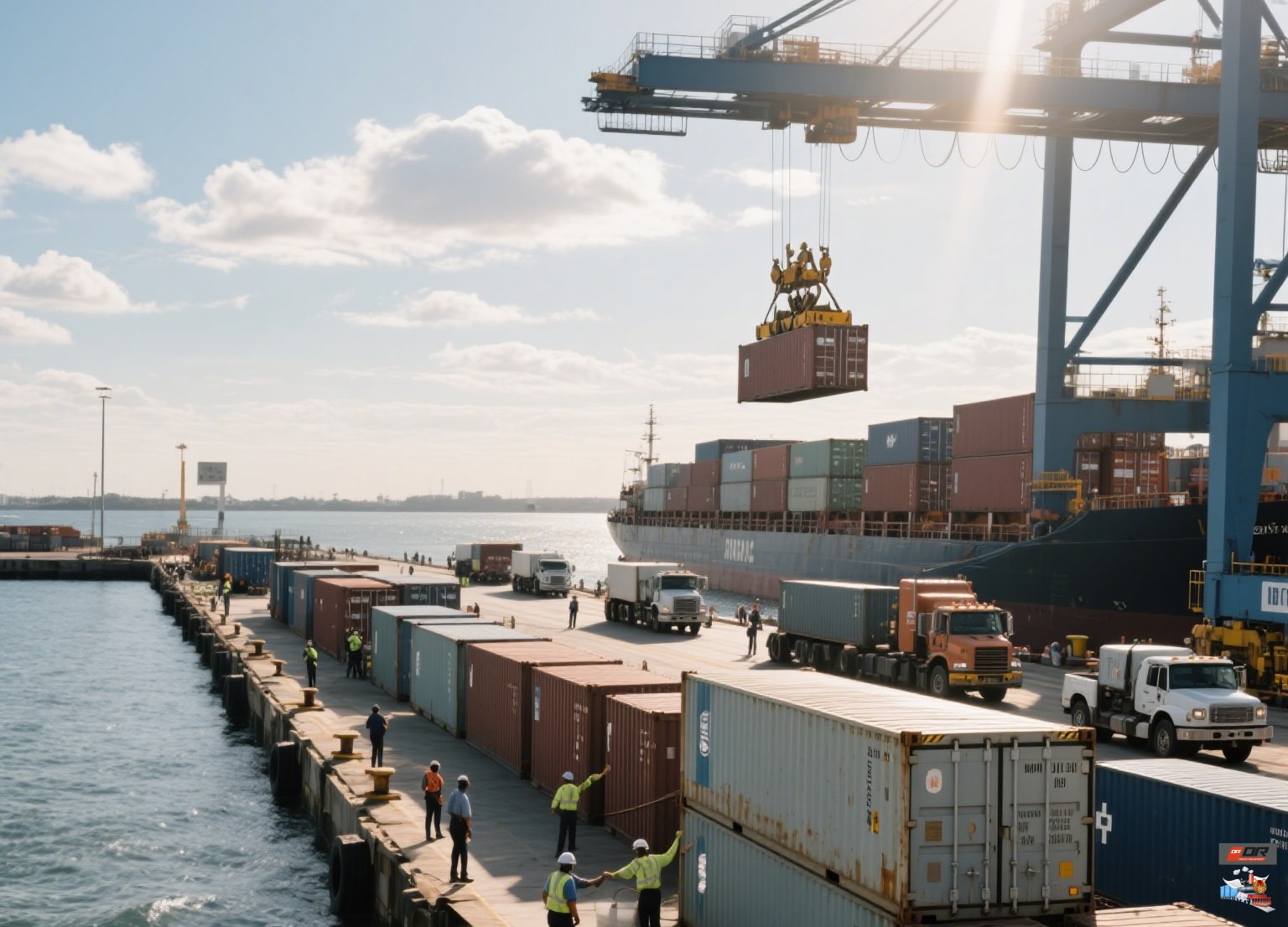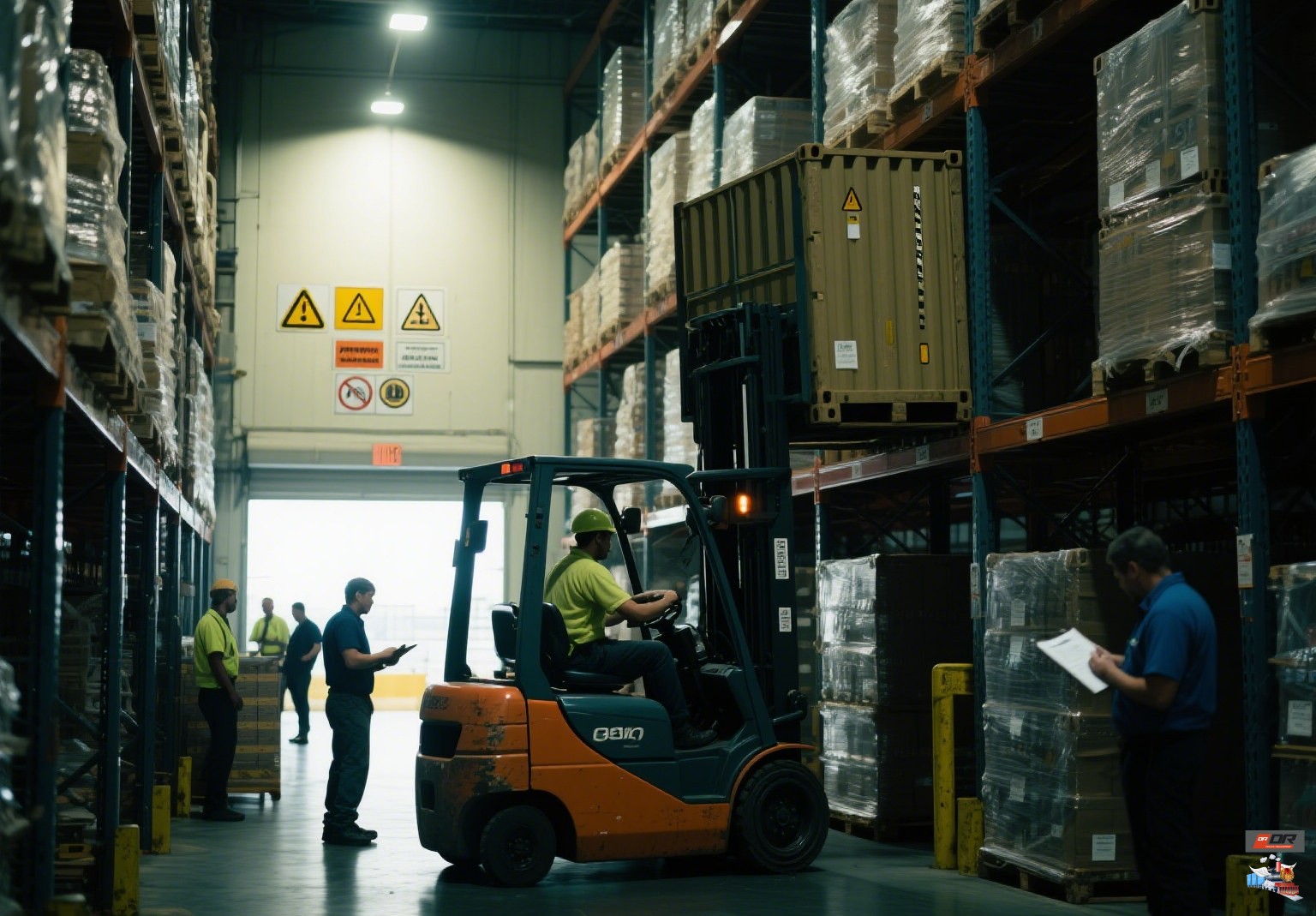Qu'est-ce que le CBM dans le transport maritime par conteneurs ?
Dans le transport maritime, CBM signifie mètre cube, l'unité métrique du volume de fret. Elle mesure l'espace occupé par une cargaison (longueur × largeur × hauteur, en mètres) sur un navire, un camion ou un train. En logistique, le CBM désigne simplement le volume total de marchandises. Ceci est important car le fret maritime se déplace. 80 % du commerce mondial en volume, il est donc crucial de connaître le volume total d'une expédition pour la planification et la gestion des coûts. Les transporteurs de marchandises utilisent le volume total pour calculer poids volumétrique et le poids facturable ; par exemple, le CBM d'un carton permet de garantir que les marchandises légères mais volumineuses (comme des oreillers ou des appareils électroniques) ne soient pas sous-facturées. En résumé, le CBM indique aux expéditeurs le volume d'un envoi, un élément essentiel pour la planification de l'espace et la tarification en logistique internationale.

Comment calculer le CBM pour le fret maritime
Le calcul du CBM est simple. Commencez par mesurer la longueur, la largeur et la hauteur de chaque article. mètres, puis multipliez : CBM = L × l × HSi vous avez plusieurs colis identiques, multipliez le résultat par la quantité. Pour les chargements mixtes, calculez chaque colis séparément et additionnez-les. Vous pouvez également utiliser un calculateur de volume d'expédition (Calculateur CBM) en ligne pour accélérer ce processus : il suffit de saisir les dimensions et la quantité de chaque article. Voici des exemples de formules CBM pour des formes courantes :
-
Cargaison rectangulaire (en forme de boîte) : CBM = Longueur × Largeur × Hauteur.
Exemple: Une boîte de 2,0 m × 1,0 m × 0,5 m a un volume de 2,0 × 1,0 × 0,5 = 1,0 m³. Cinq boîtes de ce type totalisent 5,0 m³ (5 × 1,0 m³).
-
Cargaison cylindrique (citernes, tuyaux) : CBM = π × (rayon)^2 × Hauteur.
Exemple: Un tambour de 1,0 m de diamètre (rayon = 0,5 m) et de 2,0 m de haut a CBM ≈ π×0,5²×2,0 ≈ 1,57 m³.
-
Cargaison de forme irrégulière : Estimation par forme englobante. Mesurez la longueur, la largeur et la hauteur maximales de l'objet ou de la caisse qui pourrait contenir la cargaison, puis utilisez L×l×H comme approximation. Pour les formes très inhabituelles, décomposez la cargaison en formes plus petites et régulières (sphères, cylindres, boîtes), calculez chaque volume et additionnez-les.
-
Plusieurs éléments : Calculez le cubage de chaque article et additionnez-les. Les calculateurs de cubage en ligne ou les outils de fret permettent de le faire rapidement en saisissant la taille et le nombre de chaque boîte ou palette.
Ces étapes vous indiquent comment calculer le CBM pour le fret maritime: en multipliant simplement les dimensions et en additionnant les volumes de tous les colis. (En utilisant un calculateur de volume d'expédition peut automatiser cela et éviter les erreurs.)

Tailles de conteneurs standard et leurs capacités en mètres cubes
Les conteneurs maritimes sont de tailles standard. Voici les conteneurs secs (non réfrigérés) les plus courants et leur capacité approximative :
| Type de conteneur |
Dimensions (L × l × H) (pieds) |
Volume (environ m³) |
| 20′ Standard |
20′ × 8′ × 8′6″ |
~33,2 m³ |
| 40′ Standard |
40′ × 8′ × 8′6″ |
~67,7 m³ |
| 40′ High Cube (HC) |
40′ × 8′ × 9′6″ (1′ plus haut) |
~76,4 m³ |
| 45′ High Cube (HC) |
45′ × 8′ × 9′6″ |
~86,0 m³ |
Ces valeurs proviennent des spécifications des conteneurs (données Maersk). Par exemple, la capacité en m3 d'un conteneur de 20 pieds est d'environ 33,2 m³, et une norme de 40 pieds représente environ 67,7 m³Les conteneurs High Cube sont 1 pied plus hauts, ce qui offre une hauteur libre supplémentaire (par exemple 40 pieds HC ≈76,4 m³).
Le tableau ci-dessous présente des exemples de calculs de CBM pour différentes cargaisons :
| Type de cargaison |
Dimensions (m) |
Calcul du CBM |
Total des m3 |
| Boîte individuelle |
2,0 × 1,0 × 0,5 |
2,0 × 1,0 × 0,5 = 1,0 m³ |
1.0 |
| 5 boîtes de ce type |
(5 boîtes de ce qui précède) |
5 × 1,0 m³ = 5,0 m³ |
5.0 |
| Tambour cylindrique |
φ1,0 × 2,0 (diam. × hauteur) |
π×(0,5²)×2,0 ≈ 1,57 m³ |
1,57 |
| Caisse irrégulière |
1,5 × 1,5 × 0,5 (environ) |
~1,5×1,5×0,5 = 1,125 m³ (environ) |
1.125 |
Tableau : Exemples de calculs CBM pour différentes formes de cargaison.
Utilisez ces chiffres de capacité de conteneur lors de la planification de vos expéditions. Par exemple, si vous avez 60 m³ de marchandises, vous savez qu'elles rentreront dans un conteneur de 40 pieds (67,7 m³), mais pas dans un conteneur de 20 pieds (33,2 m³). Optimiser le volume du conteneur permet d'éviter de payer pour de l'espace inutilisé.
Quelques notes supplémentaires sur la capacité des conteneurs et la planification du CBM :
-
Conteneurs High Cube (HC) : Ces caisses sont environ 30 cm plus hautes que les caisses standard (9'6″ contre 8'6″). Elles offrent environ 10 à 15 % de volume supplémentaire (par exemple, 40 pieds HC ≈76,4 m³ contre 67,7 m³ pour la caisse standard de 40 pieds).
-
Poids de la charge utile : Le volume d'un conteneur est une limite, et sa capacité de charge en est une autre. Maersk indique une charge utile maximale d'environ 28 300 kg pour un conteneur de 20 pieds et d'environ 28 870 kg pour un conteneur de 40 pieds. Si votre cargaison est très lourde (dense), vous pourriez atteindre la limite de poids avant la limite de volume.
-
EVP (équivalent vingt pieds) : Un conteneur de 20 pieds = 1 EVP, un de 40 pieds = 2 EVP. Il s'agit d'une mesure courante de la capacité des conteneurs dans les statistiques commerciales (par exemple, les ports russes ont traité des millions d'EVP).

CBM, tarifs d'expédition et rentabilité (LCL vs FCL)
Le CBM affecte directement les tarifs de fret et la planification de l'espace, en particulier dans LCL (chargement en conteneurs) contre FCL (chargement complet de conteneurs) expédition:
-
Expédition LCL : Vous payez au volume (m3) que vous occupez dans un conteneur. Les transitaires facturent les expéditions LCL au m3. En général, plus vous avez besoin d'espace, plus le coût est élevéNotez que les tarifs LCL par mètre cube ont tendance à être plus élevés que les tarifs FCL, car vous réservez des volumes plus petits. Selon Freightos, « les expéditions LCL sont plus chères au mètre cube que les FCL, parfois même deux fois plus ».
-
Expédition FCL : Vous louez un conteneur entier (20 pieds, 40 pieds, etc.) à un tarif fixe. Que vous le remplissiez entièrement ou non, vous payez le prix du conteneur (jusqu'à la limite de poids). Le transport FCL est généralement plus économique. par CBM Lorsque vous avez beaucoup de marchandises à transporter. Dès que votre expédition atteint un volume important (souvent autour de 10 m3 ou plus), réserver un conteneur complet peut s'avérer plus économique qu'un conteneur complet. Le guide Freightos indique qu'au-delà d'un seuil critique, « un conteneur entier pourrait s'avérer plus avantageux ». Le conteneur complet offre également généralement des délais de transit plus courts et moins de manutention.
-
Utilisation de l'espace : Pour économiser, emballez le plus possible en toute sécurité. Un conteneur sous-rempli revient à payer pour un volume vide. À l'inverse, un sur-rempli risque d'entraîner des dommages ou des frais de surpoids. Utilisez des palettes et des caisses pour empiler efficacement les marchandises. La planification du chargement des conteneurs (souvent appelée arrimage ou cubage) optimise l'utilisation du m3.
-
Poids vs volume : Bien que le CBM mesure le volume, les transporteurs imposent également des limites de poids. Par exemple, Maersk indique des charges utiles maximales d'environ 28,3 t (20 pieds) et 28,9 t (40 pieds). Si votre cargaison est très lourde (par exemple, des machines lourdes), vous pourriez atteindre la limite de poids avant d'avoir utilisé tout le volume. Dans ce cas, vous ne pourrez pas ajouter de marchandises, même si le volume reste inchangé. Vérifiez toujours le volume (CBM) et le poids lors de votre devis de fret.
-
Frais LCL : Les expéditions LCL entraînent souvent des frais supplémentaires (par exemple, manutention au terminal, dédouanement) à l'origine et à la destination, car elles doivent être consolidées/déconsolidées dans les gares de fret conteneurisé. Ces frais dépendent du volume total de conteneurs et de la complexité.

Calcul des coûts et outils
Les transitaires utilisent souvent la plus grande des deux valeurs suivantes : poids volumétrique (basé sur le m3) ou le poids réel lors du devis. Pour le fret maritime, le poids volumétrique est simplement exprimé en m3 (sans facteur de conversion comme pour le fret aérien). En pratique, le LCL est tarifé directement au m3 ; un calcul précis est donc essentiel.
Pour rationaliser la planification :
-
Utiliser calculateurs CBM en ligne ou des outils de fret. De nombreux sites web d'expédition (par exemple Freightos) proposent des calculateurs gratuits : saisissez les dimensions et le nombre de colis, et le calculateur calculera le volume total. Cela évite les erreurs manuelles.
-
Vérifiez bien les unités. Convertissez toujours en mètres (et en mètres cubes). Si vous avez mesuré en centimètres ou en pieds, convertissez d'abord (1 pi = 0,3048 m). FedEx fournit des conseils de conversion rapides (de pouces en mètres, etc.).
-
Comparez les transports LCL et FCL pour votre volume. Si vous êtes proche de la capacité d'un conteneur, calculez des devis pour les deux modes : LCL (somme du volume total × tarif par conteneur) et FCL (tarif forfaitaire pour conteneur). Freightos note un point de rupture souvent autour de 10 m3, mais cela dépend du transporteur et de l'itinéraire.
-
Exemple: Supposons que vos marchandises pèsent 12 m³. Un devis LCL pourrait être de 50 $/m³, soit un total de 600 $. Un FCL de 20 pieds vers la même destination pourrait coûter 1 200 $. Dans ce cas, le LCL est gagnant. Mais pour un volume de 30 m³, le LCL coûterait 1 500 $ (trop de palettes), et un FCL de 20 pieds serait plus avantageux (1 200 $).
Pour les expéditions multimodales (par exemple, combinant le transport maritime, le transport ferroviaire ou le transport routier), le CBM reste important. Même si une partie du trajet s'effectue par rail, les transporteurs utiliseront le volume pour allouer l'espace des conteneurs.
Contexte logistique russe : Le commerce de conteneurs avec la Russie est en pleine croissance. En 2024, les ports russes ont traité environ 2,63 millions d'EVP Au premier semestre, une hausse de 14,6 % par rapport à l'année précédente. Cette forte hausse exige des transporteurs et des expéditeurs une planification précise de leur CBM afin d'optimiser l'espace et les coûts des conteneurs sur les itinéraires à destination et en provenance de la Russie.
Ressources supplémentaires : De nombreux transitaires proposent des calculateurs et des directives CBM. Pour les expéditions à destination et en provenance de Russie (notamment sur les itinéraires Chine-Russie), des services intégrés peuvent s'avérer utiles. Par exemple, notre page Services présente des solutions de transport de conteneurs (LCL, FCL, ferroviaire) pour la logistique Chine-Russie. Ces services professionnels peuvent vous aider à réserver vos volumes avec précision et à planifier vos expéditions multimodales.
En résumé, CBM La clé pour comprendre le volume de fret dans le transport par conteneurs est de mesurer et de calculer soigneusement le volume de vos envois. Vous pouvez obtenir des devis précis, choisir la taille de conteneur adéquate et planifier des chargements rentables (LCL ou FCL). Vérifiez systématiquement vos calculs de volume de fret, comparez les tarifs LCL et FCL et consultez des données d'expédition fiables (comme les volumes de conteneurs ci-dessus) pour garantir l'efficacité de vos expéditions internationales.
Sources : Les ressources de l’industrie et les données des transporteurs ont été utilisées pour fournir des définitions et des chiffres précis.


















 IPv6 RÉSEAU PRIS EN CHARGE
IPv6 RÉSEAU PRIS EN CHARGE
